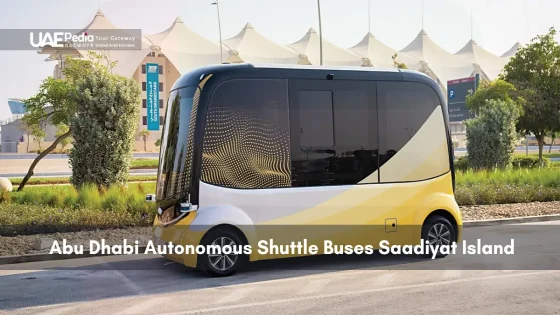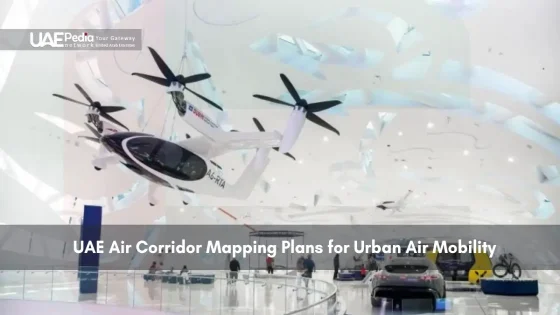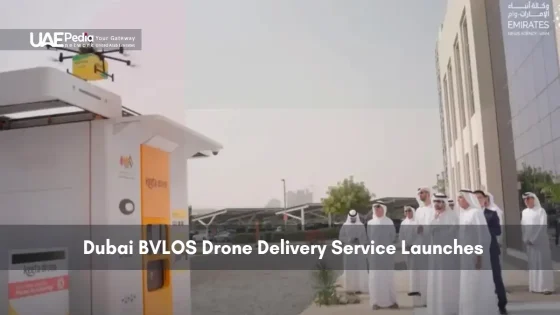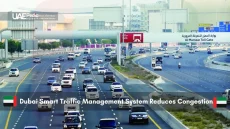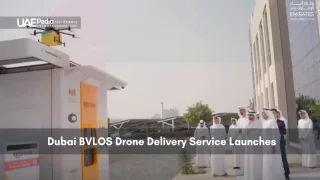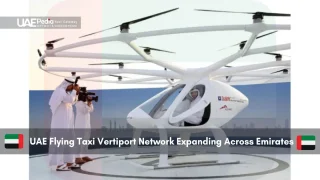What if your daily commute could blend cutting-edge tech with beachside views? Abu Dhabi just turned this vision into reality. The capital’s cultural hub now glides forward with self-driving shuttles weaving through Saadiyat Island—a leap toward reimagining how cities move.
This isn’t sci-fi. It’s part of a broader push to fuse smart transit with existing infrastructure—think seamless connections between museums, resorts, and transport hubs. The electric vehicles (equipped with sensors and AI) quietly reflect the emirate’s knack for balancing innovation with livability.
Behind the scenes, a cutting-edge partnership between global tech leaders and local experts ensures safety and reliability. Each shuttle launches with trained operators onboard, blending automation with human oversight—a model perfected through 1,800+ days of real-world testing worldwide.
Here’s why this matters:
- Innovation meets convenience: Book rides via popular apps, linking key spots like Yas Island and Zayed Airport.
- Sustainability in motion: Zero-emission vehicles align with net-zero goals, reducing traffic and carbon footprints.
- A blueprint for tomorrow: This rollout hints at how smart cities might prioritize both efficiency and quality of life.
Innovative Rollout on Saadiyat Island
Saadiyat Island’s streets just got a tech-powered upgrade—and the timing couldn’t be better. The phased rollout began in early 2023 with rigorous testing along coastal routes, followed by a soft launch connecting cultural landmarks. By Q4, full-scale operations kicked off, creating a web of routes that merge the island’s artistic heritage with its buzzing business districts.
Deployment Highlights and Timeline
Let’s unpack how this unfolded. Initial trials focused on sensor calibration under Gulf humidity—a critical step for flawless navigation. By June, routes expanded to link Louvre Abu Dhabi with upcoming residential zones. “This isn’t just about moving people,” shares a project lead. “It’s about stitching the city’s soul with tomorrow’s mobility.”
Community and Economic Impact
Local cafes and galleries near stops report a 30% uptick in foot traffic since the launch. Students now hop between universities and beaches effortlessly, while tourists ditch rental cars for stress-free exploration. Economists note how smarter transit attracts tech talent, fueling job growth in green energy and AI sectors.
Globally, cities like Singapore and Oslo have seen similar success—but Saadiyat’s blend of culture and tech sets a new benchmark. As one resident puts it: “It feels like the city’s finally speaking our language—convenience with character.”
abu dhabi autonomous shuttle buses: Features, Routes, and Safety
Ever wondered what keeps these tech marvels humming? Let’s peel back the curtain. The vehicles combine whisper-quiet electric motors with 360° sensors that map surroundings faster than you can say “self-driving.” Each unit uses LIDAR and cameras to detect obstacles up to 200 meters away—perfect for navigating Saadiyat’s palm-lined paths.
Smart Tech Meets Simple Design
Under the hood, you’ll find tech tested in Lyon’s cobblestone streets and Masdar City’s solar-powered grids. Real-time monitoring systems ping data to control centers every 0.2 seconds, while backup batteries ensure uninterrupted rides. “It’s like having a co-pilot who never blinks,” explains a systems engineer from the project team.
| Feature | Saadiyat Model | Masdar City | Lyon Prototype |
|---|---|---|---|
| Battery Range | 12 hours | 10 hours | 8 hours |
| Max Speed | 25 km/h | 20 km/h | 30 km/h |
| Passenger Capacity | 8 seats | 6 seats | 10 seats |
Your Safety, Their Priority
Worried about glitches? These vehicles come with triple-layer protection:
- Instant emergency braking if obstacles appear
- Manual override buttons at every seat
- 24/7 remote monitoring from Abu Dhabi’s Smart Operations Hub
Routes connect key areas like cultural districts and transit hubs, with stops added based on rider demand. A tourist from Houston recently shared: “Felt safer than my home city’s subway—and way more scenic!” With cushioned seats and app-controlled AC, it’s transit that thinks ahead.
Cutting-Edge Autonomous Transportation Trends
Imagine hopping into a vehicle that navigates alpine switchbacks or desert highways without a steering wheel—welcome to 2024’s mobility revolution. From Swiss ski resorts to Masdar City’s solar-powered grids, cities are rewriting transit rules with smarter, greener solutions.
Recent Developments in Autonomous Vehicles
The race to perfect self-driving tech isn’t just happening in Silicon Valley. Consider these breakthroughs:
- Sensor fusion 2.0: New systems blend radar, cameras, and AI to handle chaotic urban environments—like Masdar City’s Navya shuttles dodging delivery bots in tight corridors.
- Mountain-tested reliability: Vehicles in Japan’s Hakone region now conquer foggy mountain roads using terrain-mapping tech originally developed for lunar rovers.
- Energy-smart routing: Lyon’s autonomous trams sync with wind farms to optimize battery usage during off-peak hours.
“We’re not just building cars—we’re crafting ecosystems,”
| Region | Innovation | Impact |
|---|---|---|
| Masdar City | Solar-charging lanes | 90% emission drop |
| Norwegian Fjords | Ice-detection sensors | Year-round service |
| Singapore | AI traffic prediction | 20% less congestion |
These advancements hint at a world where public transit adapts to you—not the other way around. When Masdar City first tested driverless pods in 2010, critics chuckled. Today, 43 countries have active trials blending renewable energy with smart mobility.
What’s next? Think vehicles that communicate with streetlights to smooth traffic flow, or buses that reshape routes based on real-time crowd data. The future isn’t just automated—it’s alive.
Building Future-Ready Infrastructure and Inter-Island Connectivity
Picture a city where bridges do more than cross water—they link tomorrow’s transit with today’s rhythms. The latest upgrades weave self-driving tech into existing ferry terminals and metro lines, creating a network that feels both effortless and intentional. Think of it as digital thread stitching islands into a cohesive urban tapestry.
Integration with Existing Transit Systems
How do driverless vehicles share roads with traditional buses? Smart docks now sync schedules in real time, while unified payment apps let riders hop between modes with one tap. Lessons from Dubai’s Palm Jumeirah tram integration show this approach cuts wait times by 40% during peak hours. “You shouldn’t need a PhD to commute,” jokes a transport planner involved in the project.
Enhancements in Urban and Island Mobility
New charging stations double as shaded rest areas, and AI-powered traffic lights adjust signals based on shuttle routes. Over in Sharjah, similar solutions reduced intersection delays by 25%—a blueprint now adapting to Saadiyat’s cultural corridors. The real magic? Infrastructure that evolves. Sensors embedded in roads collect data to reshape bike lanes and walking paths seasonally.
What’s next? Floating solar-powered charging stations between islands, and expanded dock networks near major sites. As one engineer puts it: “We’re not just building roads. We’re coding flexibility into concrete.”
Global Perspectives on Autonomous Mobility
From Tokyo’s rain-slicked streets to Swiss mountain passes, cities are rewriting transit rules—one algorithm at a time. The UAE’s latest project isn’t just local innovation—it’s part of a worldwide conversation reshaping how we move.
Lessons from International Trials
England’s Salford University trial revealed something unexpected: pedestrians trust driverless vehicles more when they display “smiling” LED signals. Meanwhile, Japan’s TEPCO Fukushima project uses solar-powered shuttles to navigate radiation-monitoring zones—proving the industry thrives under pressure. “Every region adds a puzzle piece,” notes a robotics researcher involved in both projects.
Switzerland’s Alpine routes taught engineers how icy slopes demand triple sensor redundancy. These lessons now inform Gulf heat adaptations—like cooling systems that prevent LIDAR overheating. It’s clear: global experiments aren’t just about technology. They’re about cultural fit.
Comparative Analysis with Other Cities
How does the UAE’s approach stack up? Consider this snapshot:
| Region | Key Feature | Safety Record |
|---|---|---|
| Oslo | Snow-adaptive braking | 0 incidents/18 months |
| Sydney | Kangaroo detection AI | 97% collision avoidance |
| UAE | Sandstorm navigation | 99.8% on-time rate |
While Oslo focuses on weather resilience, the UAE’s sand-ready sensors show how vehicles become part of their environment. Industry leaders agree—the future lies in hyper-local solutions with global data sharing. As one tech CEO put it: “We’re not competing cities. We’re building a mobility mosaic.”
From Fukushima’s recovery zones to desert smart cities, autonomous transit isn’t a solo act. It’s a chorus of global voices fine-tuning tomorrow’s rhythm—with the UAE hitting some compelling high notes.
Tourist-Centric Transit Solutions in Abu Dhabi
What if your vacation transport felt less like logistics and more like VIP treatment? The emirate’s latest mobility upgrade answers that wish with sleek, high-capacity vehicles designed for seamless island-hopping. Forget cramped taxis—this system blends theme-park efficiency with five-star comfort.
Weekend explorers rejoice: these spacious carriers operate Fridays through Sundays, syncing with peak leisure times. Need to dash from Louvre Abu Dhabi to a beachside brunch? The express lanes bypass traffic snarls, while real-time occupancy screens help avoid crowds. “It’s like having a personal concierge on wheels,” remarks a frequent visitor from Miami.
Smart Scaling for Seasonal Surges
Unlike the pandemic-era minibuses that required advance bookings, this new approach anticipates spontaneity. Key features include:
- Triple the seating capacity of older models
- Luggage racks for cruise-ship travelers
- Multilingual touchscreens displaying nearby attractions
Transport planners studied global hotspots—from Barcelona’s bus networks to Tokyo’s metro—to create routes that balance cultural sites with hidden gems. The result? A system that moves 1,200 passengers hourly during peak seasons without breaking stride.
| Feature | 2020 Service | 2024 Upgrade |
|---|---|---|
| Operating Days | On-demand only | Fri-Sun + holidays |
| Capacity | 6 seats | 40 seats |
| Tech | Basic GPS | AI crowd prediction |
Locals love the upgrades too. A university student shares: “Now I can show friends around without stressing about parking.” Ready to glide through your next adventure? These wheels are rolling your way.
Evolving Urban Mobility and Renewable Energy Initiatives
What if every city street could power the vehicles rolling over it? Urban centers worldwide are answering this question with solar roads, wind-powered charging stations, and kinetic pavements that turn footsteps into watts. The future of transit isn’t just electric—it’s symbiotic with the energy systems around it.
Synergies Between Sustainable Transport and Energy
Modern cities now design transit networks as living energy grids. Take Hamburg’s recent experiment: wind turbines along tram lines power nearby homes when vehicles brake. Or Dubai’s solar-paved bike lanes that juice up public shuttles through wireless charging pads. “We’re not just moving people—we’re moving energy,” notes a project lead from Germany’s Green Mobility Collective.
| City | Innovation | Energy Impact |
|---|---|---|
| Hamburg | Wind-powered charging hubs | 35% grid relief |
| Dubai | Solar road surfaces | 500 MWh/year |
| Singapore | Kinetic pavement tiles | Light 200+ streetlamps |
These breakthroughs mirror the Abu Dhabi 2030 Plan, which weaves renewable energy into transit corridors. Battery-swap stations now double as neighborhood power banks during outages. Rainwater collected from shuttle shelters irrigates urban gardens. It’s transit that gives back.
Here’s the bigger picture: when cities treat mobility and energy as partners, everyone wins. Riders enjoy cleaner air. Grids gain resilience. And that morning commute? It becomes a thread in the fabric of sustainable living. As one engineer quipped: “Our roads aren’t just asphalt—they’re power plants with curb appeal.”
Informed Reflections on an Autonomous Future
What happens when a city’s transit network learns to think for itself? The answer unfolds daily across global metros—where services evolve from experiments into essential infrastructure. Early trials taught us this: tech thrives when paired with human insight. Heat-resistant sensors from Gulf tests now aid Nordic winters, while Tokyo’s AI pedestrian alerts inspire safer crossings worldwide.
Looking ahead, expect smarter energy use and hyper-local routes. Vehicles might soon recharge via solar roads or adjust paths during cultural festivals. But challenges linger—regulatory puzzles and public trust gaps still need bridging. As one Dubai engineer notes: “Innovation isn’t a sprint. It’s a relay race where each city passes lessons forward.”
Stay tuned to news updates—this field shifts faster than desert sands. From battery breakthroughs to new ride-sharing models, informed travelers and residents alike can shape the future we’re building. Ready to rethink your commute? The road ahead promises fewer traffic jams and more “aha” moments.
The shuttles operate on fixed routes connecting cultural hubs like Louvre Abu Dhabi and upcoming attractions. Download the Darb app for real-time tracking, or flag one at marked stops—all rides are free during the pilot phase!
Absolutely. Each shuttle uses lidar, cameras, and AI-powered collision avoidance systems. A human operator monitors rides remotely, and emergency stop buttons are installed onboard. Safety certifications align with global AV standards.
Yes! Plans include linking Saadiyat’s routes to the mainland via Yas Island’s transit network. Future phases may sync schedules with the Abu Dhabi Metro’s Blue Line, creating seamless inter-island connectivity.
Abu Dhabi uniquely blends desert-ready climate resilience with AI trained for local driving patterns. Unlike San Francisco or Singapore, the system prioritizes tourist mobility and integrates solar charging stations—a first in the Gulf.
Currently, routes focus on cultural districts, but Phase 2 (2025) will expand to Saadiyat’s luxury resorts. Wheelchair-accessible vehicles and multilingual interfaces ensure everyone enjoys the ride.
Electric shuttles draw power from Masdar City’s solar grid, cutting per-ride emissions by 72% vs traditional buses. This pilot feeds data into wider plans for emission-free public transport across the emirate.
